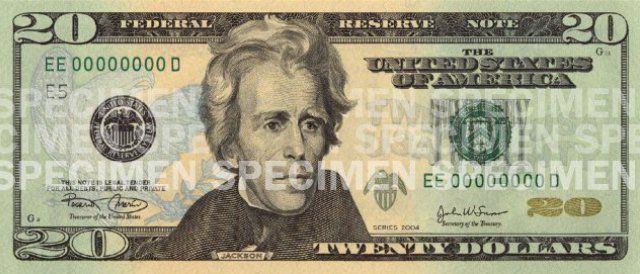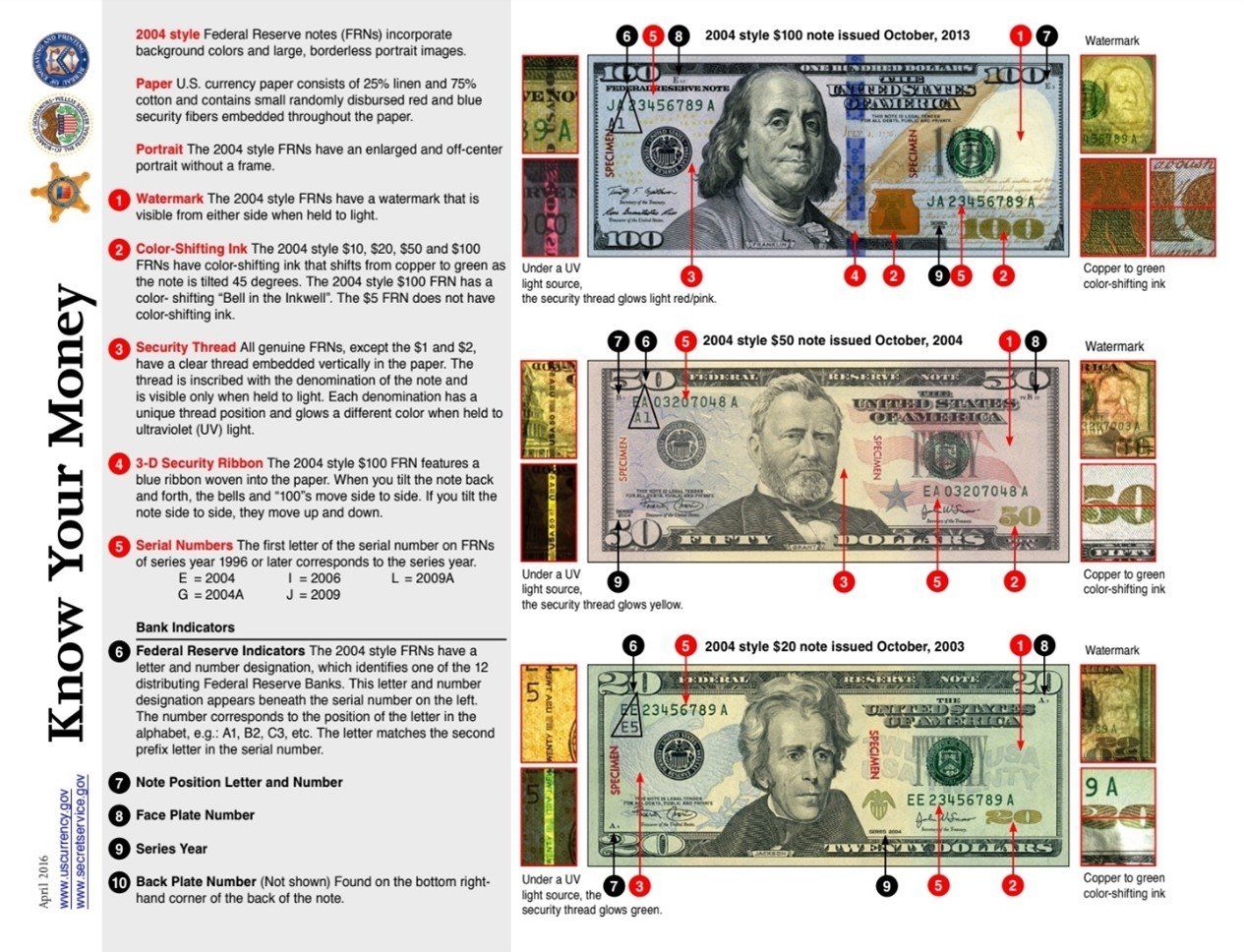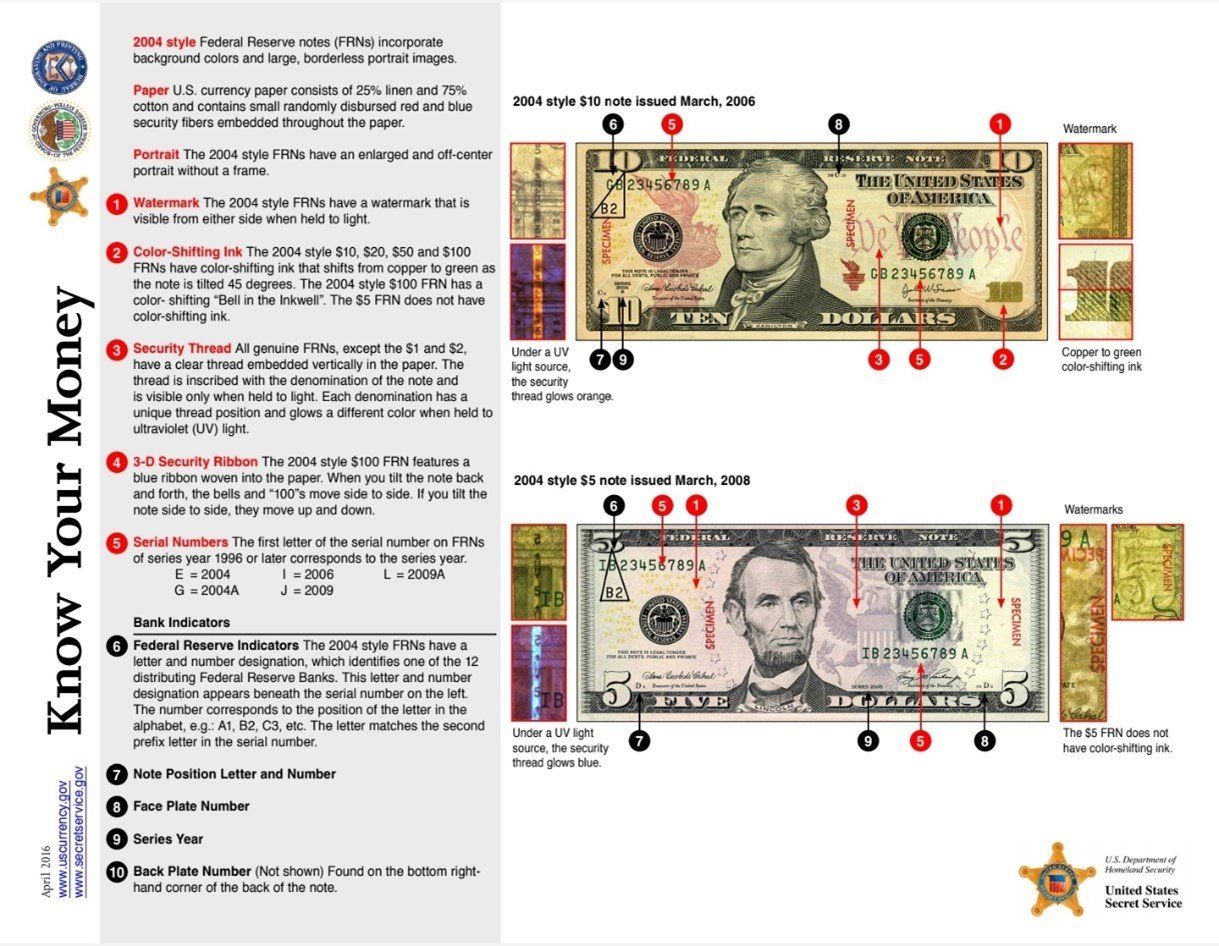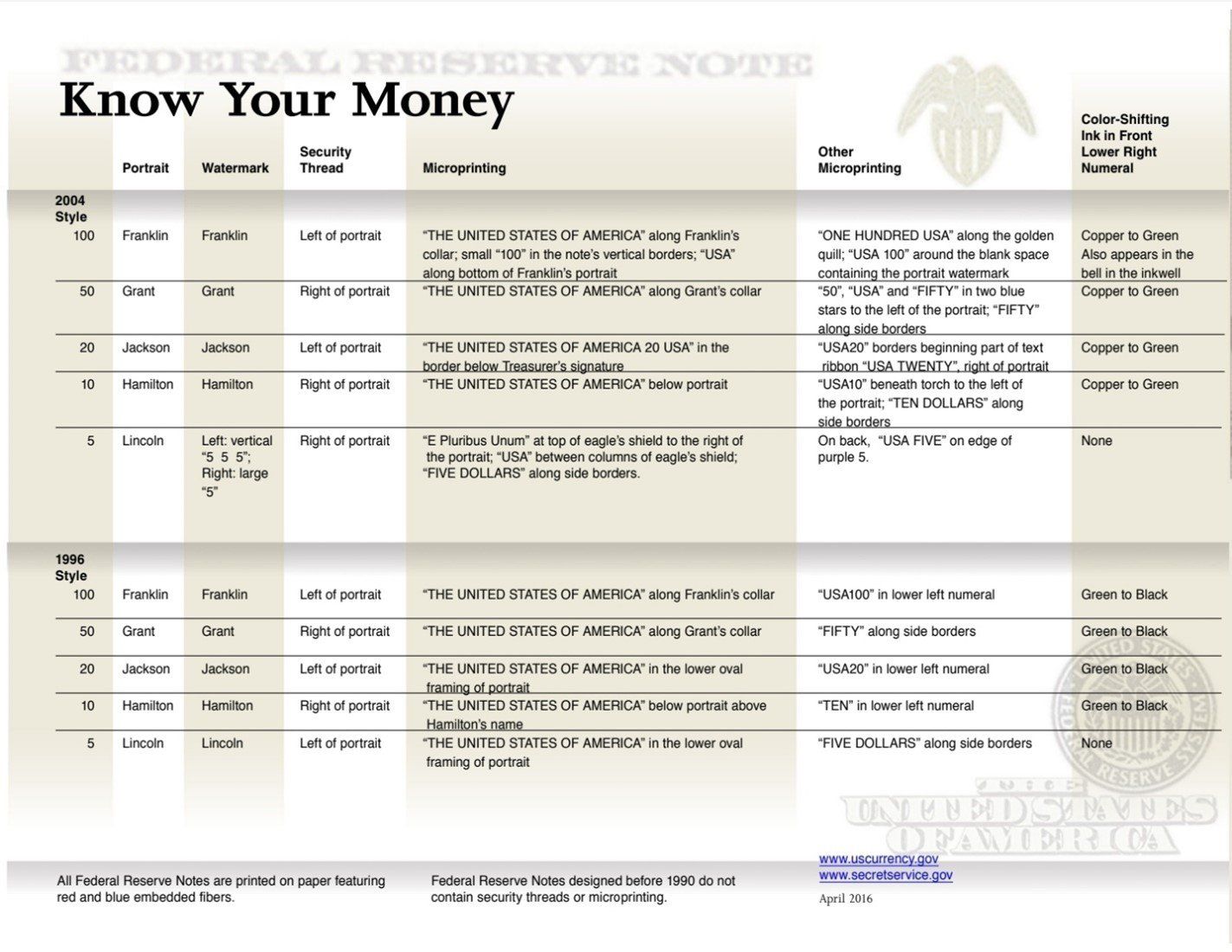AUTHENTICATE YOUR CASH

Learn to identify counterfeit money.
Report suspected counterfeit currency to the U.S. Secret Service.
https://www.usdollars.usss.gov/usdollars/welcome.xhtml?dswid=-3511
Most counterfeited U.S. currency: $20 and $100 denominations
Depends on the location in the world.
U.S. counterfeiters' favorite: $20 billIt is readily accepted everywhere without question.
It has been said that when one person sells and another one buys, they both think they were smart. But no one feels smart when their money gets confiscated as counterfeit and they are left with seller’s remorse. The risk becomes worse if the victim decides to pass it off on someone else and a criminal investigation ensues. It is advised that you accept the loss and turn in the illegitimate loot to the police, a bank, or the Secret Service along with any evidence of the crime committed against you. Being a victim of a crime is a better legal position than being suspected as an instigator or co-conspirator of a crime. With these skills you can be smart.
How to Inspect U.S. Dollar Bills:
1. Feel the Texture of the Bill2. Compare Bills of Similar Denominations and Series
3. Look for the Quality of Printing
4. Look for Blue and Red Fibers
5. Study the Serial Numbers
6. Look for Security Features
TEXTURE. Currency paper is a cotton/linen mix made according to a secret formula. Proper U.S. notes feel crisp, glossy, and elastic, not like regular paper and will not easily tear. Use your fingers to feel the money. A security pen can be purchased at most office supply stores. Mark on the money and a dark brown or gray color means it is not good currency. A legitimate note will leave a light gold color.
DENOMINATION/SERIES. Some businesses which frequently deal with cash will keep bills of each denomination from various years (Series) which they already know to be legitimate. They will keep bills of the same denomination from different years, because the designs have changed over the decades. They use the known legitimate bills as specimens against which they can compare the features of unknown bills from customers to help them determine if the customer’s currency is legitimate.
PRINTING QUALITY. Legitimate notes have some of the finest printing possible. It will be sharp and clear with no smudging. Firmly press and glide your fingers over the note to see if you can get the ink to smudge. If character edges are fuzzy or there is smudging then you have counterfeit money.
FIBERS. Red and blue fibers are woven within the paper of a note, not on it. A magnifying glass can help you best see it. Counterfeiters may paint colors on the paper to look like fibers.
SERIAL NUMBERS. Digits should be evenly spaced and properly aligned. Notes of the same denomination will never have the same serial number if they are legitimate. Counterfeiters will sometimes print a lot of bills with the same serial numbers because it is efficient.
SECURITY FEATURES. Notes above $1 and $2 denominations have many special features, such as a polyester security strip running the width of the bill with the denomination printed in them and they may glow different colors under a black light and be magnetic. Watermarks are ghost images barely seen to the right of the portraits. Most counterfeit money will not include those, but they may. Some images include color shifting ink that can be seen as the bill is moved at different angles. There is microprinting on designated spots of some bills. Some have intaglio images, raised images that can be felt.
Educational Site: https://www.uscurrency.gov/




